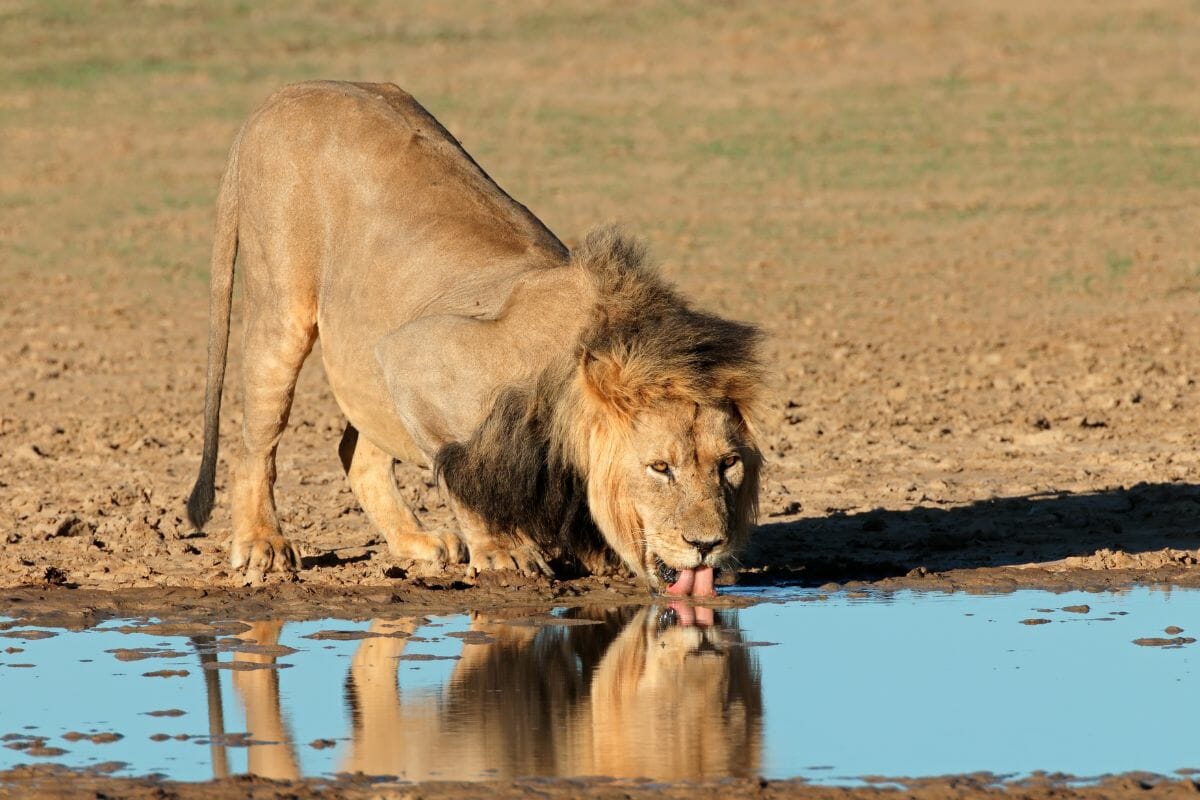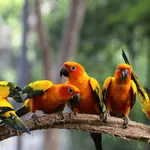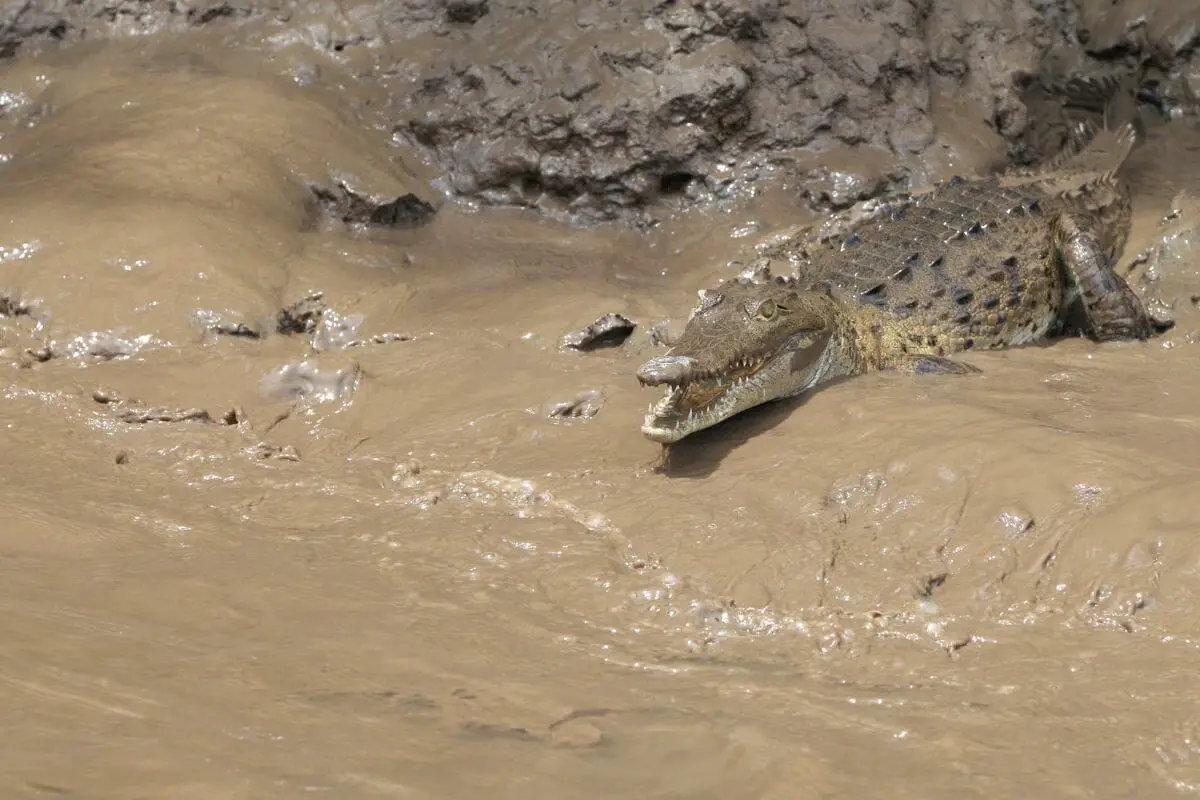Crocodiles in Africa are a fascinating and diverse group of reptiles that have captivated people’s imaginations for centuries. These ancient predators, from the mighty Nile crocodile to the elusive African dwarf crocodile, play a crucial role in the continent’s ecosystems.
In this comprehensive overview, we will explore the different species of African crocodiles, their unique adaptations, habitats, and behaviors. We will also discuss the challenges they face, such as habitat loss and human-wildlife conflict, and the conservation efforts underway to protect these iconic creatures.
Quick Answer: The main crocodile species found in Africa are:
- Nile Crocodile: Largest and most widespread species
- West African Crocodile: Adapted to drier environments in West Africa
- West African Slender-snouted Crocodile: Critically endangered, found in West/Central African rainforests
- Central African Slender-snouted Crocodile: Recently recognized species in Central Africa
- African Dwarf Crocodile: Smallest species, inhabits tropical rainforests
List of African Crocodiles
Key Takeaways:
- Africa is home to 5 crocodile species, each with unique characteristics and habitats: Nile, West African, slender-snouted (both West and Central African), and African dwarf crocodiles.
- Threats to African crocodiles include habitat loss, illegal hunting, human conflict, pollution, and climate change, with some species critically endangered.
- Conservation efforts involve protecting habitats, combating poaching, engaging communities, conducting research, and fostering international cooperation to ensure the survival of these iconic reptiles.
Africa is home to several species of crocodiles, each with their unique characteristics, habitats, and distributions across the continent. The main crocodile species found in Africa include:
1. Nile Crocodile (Crocodylus niloticus)
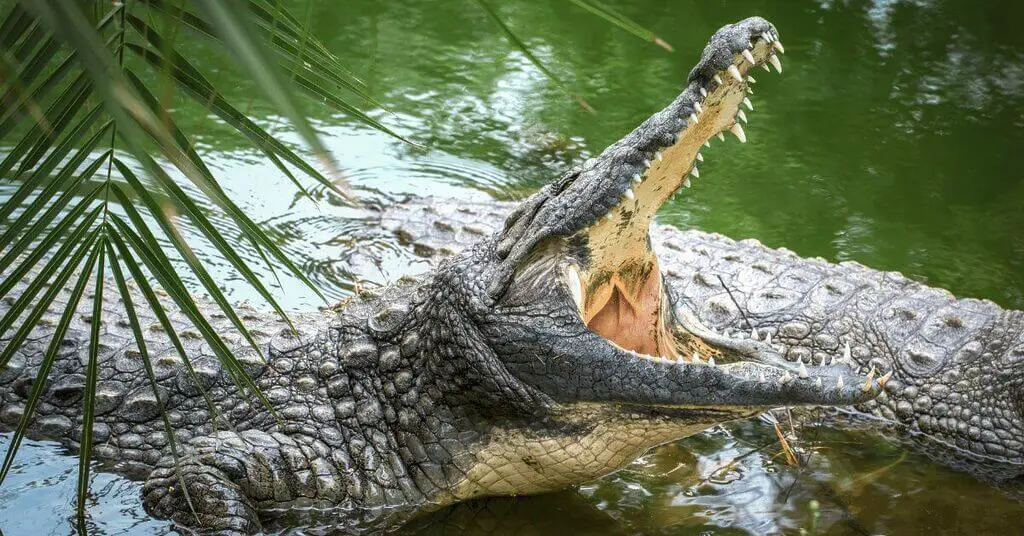
The Nile Crocodile is the largest crocodile species in Africa and the second-largest in the world. It is widely distributed throughout sub-Saharan Africa, inhabiting various water bodies such as rivers, lakes, and wetlands.
Habitat and Distribution
Nile Crocodiles are found in numerous African countries, including Egypt, Sudan, South Sudan, Ethiopia, Kenya, Uganda, Tanzania, Zambia, Zimbabwe, Botswana, Namibia, Angola, Mozambique, Malawi, and South Africa.
They prefer freshwater habitats with an abundance of prey and basking sites, such as riverbanks, lakeshores, and wetlands. These crocodiles can tolerate a wide range of water temperatures, from 22°C to 32°C, and depths of up to 30 meters.
Physical Characteristics
Adult male Nile Crocodiles typically reach lengths of 3.5 to 5 meters and weigh between 225 and 750 kilograms, while females are smaller, averaging 2.4 to 3.8 meters in length. They have a robust, heavily scaled body with a powerful tail and webbed feet. Their coloration varies from dark olive to gray-green, with a lighter underbelly. Nile Crocodiles have 64 to 68 teeth, which are regularly replaced throughout their lives.
Diet and Hunting Behavior
Nile Crocodiles are apex predators and opportunistic feeders, consuming a wide variety of prey depending on their size and habitat. Juvenile crocodiles feed on insects, amphibians, and small fish, while adults prey on larger fish, reptiles, birds, and mammals, including antelope, zebra, and even young hippos.
They are ambush predators, lying in wait for prey to come close before launching a surprise attack. Nile Crocodiles also engage in cooperative hunting, working together to take down larger prey. Their powerful jaws and teeth allow them to crush and tear apart their food.
Conservation Status
The Nile Crocodile is listed as “Least Concern” on the IUCN Red List, but populations have declined in some areas due to habitat loss, human-wildlife conflict, and illegal hunting for their skin and meat.
Conservation efforts, such as protected areas and sustainable use programs, have helped maintain stable populations in many regions. However, continued monitoring and protection are essential to ensure the long-term survival of this iconic African predator.
2. West African Crocodile / Desert Crocodile (Crocodylus suchus)
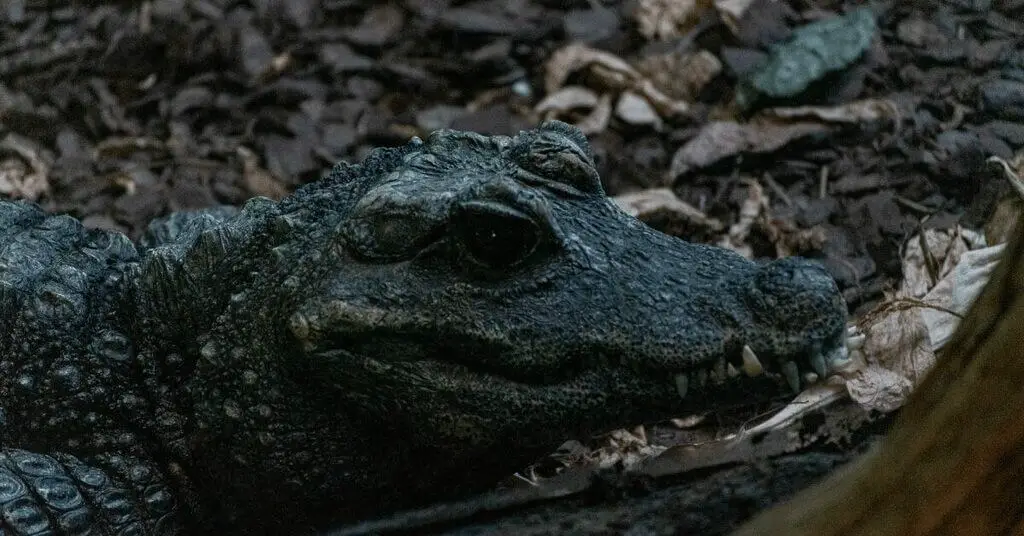
The West African Crocodile, also known as the Desert Crocodile, was previously considered a subspecies of the Nile Crocodile but has recently been recognized as a separate species. It is adapted to drier environments and is found in West Africa.
Habitat and Distribution
West African Crocodiles inhabit semi-arid regions and the Sahel belt, spanning countries such as Mauritania, Senegal, Gambia, Guinea-Bissau, Guinea, Mali, Burkina Faso, Niger, Nigeria, Cameroon, and Chad.
They are found in seasonal rivers, wetlands, and oases, often in areas with less permanent water sources compared to Nile Crocodiles. These crocodiles have adapted to withstand periods of drought by estivating in burrows or under mud.
Physical Characteristics
Adult West African Crocodiles are generally smaller than Nile Crocodiles, with males reaching lengths of 2.5 to 3.5 meters and females averaging 1.8 to 2.7 meters. They have a more slender build and a slightly narrower snout.
Their coloration is typically lighter, ranging from yellow-green to light brown, which helps them blend into their arid habitat. West African Crocodiles have specialized salt glands that allow them to excrete excess salt, an adaptation for living in drier environments.
Diet and Hunting Behavior
The diet of West African Crocodiles consists mainly of fish, reptiles, and small mammals, with occasional consumption of birds and invertebrates.
Their prey availability is often more limited compared to Nile Crocodiles due to the seasonal nature of their habitat. These crocodiles are opportunistic hunters, using ambush tactics to capture prey that comes to the water’s edge to drink or forage. They have also been observed hunting on land, particularly during the wet season when prey is more abundant.
Conservation Status
The West African Crocodile is listed as “Vulnerable” on the IUCN Red List due to habitat loss, human-wildlife conflict, and illegal hunting. Its populations have declined in many parts of its range, particularly in areas with high human population density and agricultural expansion.
Conservation efforts, such as community-based conservation and education programs, are crucial for protecting this unique species and its habitat. More research is needed to better understand its ecology and develop effective conservation strategies.
3. West African Slender-snouted Crocodile (Mecistops cataphractus)
The West African Slender-snouted Crocodile is a critically endangered species known for its distinctive elongated, narrow snout. It is found in the forested regions of West and Central Africa.
Habitat and Distribution
West African Slender-snouted Crocodiles inhabit slow-moving rivers, swamps, and densely vegetated wetlands in the rainforests of West and Central Africa.
Their range includes countries such as Guinea, Sierra Leone, Liberia, Côte d’Ivoire, Ghana, Togo, Benin, Nigeria, Cameroon, Equatorial Guinea, Gabon, Republic of the Congo, and the Democratic Republic of the Congo. However, habitat fragmentation and loss have significantly reduced their distribution and connectivity between populations.
Physical Characteristics
Adult West African Slender-snouted Crocodiles typically reach lengths of 2 to 3.5 meters, with males being larger than females. They have a distinctive elongated, narrow snout, which is an adaptation for catching fish and other small prey in their forested habitat.
Their body is slender and streamlined, with a dark brown to olive coloration and irregular black spots on the back and tail. The scales on their back are heavily ossified, providing extra protection.
Diet and Hunting Behavior
The slender snout of the West African Slender-snouted Crocodile is well-suited for capturing fish, which make up a significant portion of its diet.
They also consume crustaceans, amphibians, reptiles, and small mammals. These crocodiles are skilled ambush predators, waiting patiently for prey to come within striking distance before launching a rapid attack. In the densely vegetated habitats they occupy, they often hunt by slowly patrolling the water’s edge or submerging and waiting for prey to pass overhead.
Conservation Status
The West African Slender-snouted Crocodile is listed as “Critically Endangered” on the IUCN Red List, facing a very high risk of extinction in the wild.
The primary threats to this species are habitat loss, fragmentation, and degradation due to deforestation, agricultural expansion, and human settlement. Illegal hunting for bushmeat and the pet trade also contribute to their decline. Conservation efforts, such as protected area management, habitat restoration, and law enforcement, are urgently needed to prevent the extinction of this unique crocodile species.
4. Central African Slender-snouted Crocodile (Mecistops leptorhynchus)
The Central African Slender-snouted Crocodile, previously considered a subspecies of the West African Slender-snouted Crocodile, has recently been recognized as a separate species. It is found in the forested regions of Central Africa.
Habitat and Distribution
Central African Slender-snouted Crocodiles inhabit rainforests and riverine habitats in Central Africa, primarily in the Congo Basin. They are found in countries such as the Democratic Republic of the Congo, Republic of the Congo, and Gabon.
Like their West African counterparts, they prefer slow-moving rivers, swamps, and densely vegetated wetlands. However, their distribution is more limited, and they are affected by habitat loss and degradation.
Physical Characteristics
Adult Central African Slender-snouted Crocodiles are similar in size to the West African species, with males reaching lengths of 2 to 3.5 meters and females being slightly smaller.
They share the distinctive elongated, narrow snout adapted for catching fish and small prey in their forested habitat. However, there are some subtle differences in their scalation patterns, tooth counts, and coloration, which led to their recognition as a separate species.
Diet and Hunting Behavior
The Central African Slender-snouted Crocodile’s diet consists mainly of fish, crustaceans, and small vertebrates, similar to the West African species. However, the specific composition of their diet may vary depending on the availability of prey in their particular habitat.
They are ambush predators, using their slender snout and streamlined body to quickly capture prey in the water or at the water’s edge. Their hunting techniques are well-adapted to the challenges of finding food in the dense rainforest environment.
Conservation Status
The Central African Slender-snouted Crocodile is a relatively newly described species, and its conservation status has not been formally assessed by the IUCN.
However, like the West African species, it is likely to be threatened by habitat loss, fragmentation, and degradation due to human activities such as logging, mining, and agricultural expansion.
More research is needed to understand its population status, ecology, and the specific threats it faces. Protecting the rainforest habitats of Central Africa will be crucial for the conservation of this species and the many other unique animals that share its range.
5. African Dwarf Crocodile (Osteolaemus tetraspis)
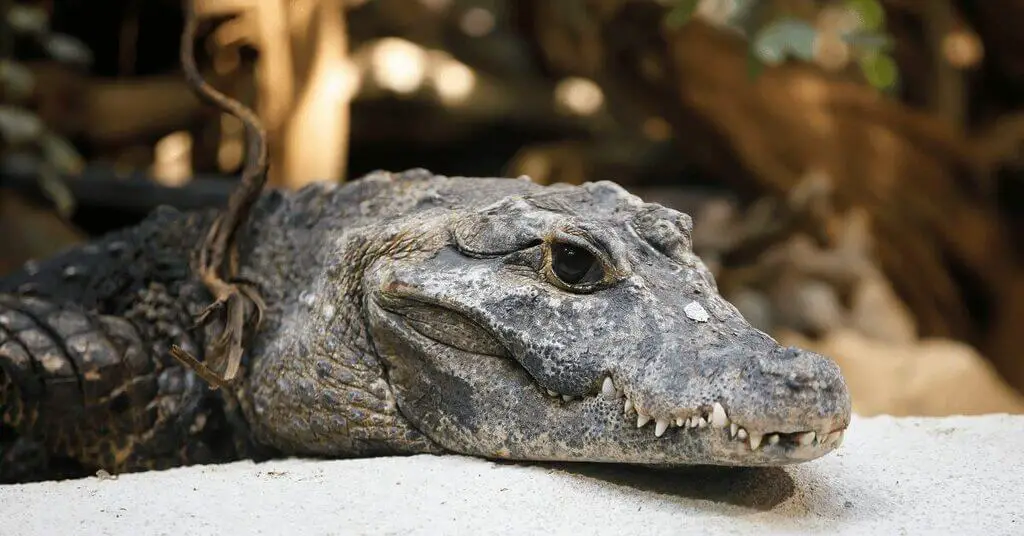
The African Dwarf Crocodile is the smallest crocodile species in Africa and one of the smallest in the world. This elusive reptile is found in the tropical rainforests of West and Central Africa, where it plays an important role in the ecosystem.
Habitat and Distribution
African Dwarf Crocodiles inhabit densely forested areas, preferring small, slow-moving streams, swamps, and pools within the rainforest. They are found in countries such as Nigeria, Cameroon, Gabon, Republic of the Congo, and Democratic Republic of the Congo. These crocodiles are highly dependent on the forest habitat and are rarely found in open areas or larger rivers.
Physical Characteristics
Adult African Dwarf Crocodiles typically reach lengths of 1.5 to 1.9 meters (4.9 to 6.2 feet) and weigh between 18 and 32 kg (40 to 70 lbs), making them significantly smaller than other African crocodile species.
They have a broad, short snout and a heavily armored body with dark brown or black coloration and yellowish or light brown undersides. Their eyes are situated more on the side of the head compared to other crocodiles, an adaptation to their forest habitat.
Diet and Hunting Behavior
African Dwarf Crocodiles are opportunistic predators, feeding on a variety of small prey, including fish, crustaceans, amphibians, and invertebrates. Their small size allows them to navigate through the dense vegetation and shallow waters of their forest habitat in search of food. They are primarily nocturnal hunters, using their keen senses to locate prey in the dark.
Conservation Status
The African Dwarf Crocodile is listed as “Vulnerable” on the IUCN Red List, with populations declining due to habitat loss and degradation, as well as hunting for their skin and meat.
The species’ dependence on intact rainforest habitat makes it particularly vulnerable to deforestation and human encroachment. Populations have declined by an estimated 30-40% over the past 75 years, and conservation efforts are focused on protecting remaining habitat and reducing human-crocodile conflicts.
Crocodile Conservation in Africa
Crocodiles play a crucial role in African ecosystems, but many species face significant threats to their survival. Conservation efforts are essential to ensure the long-term protection of these fascinating reptiles and their habitats.
Threats to African Crocodiles
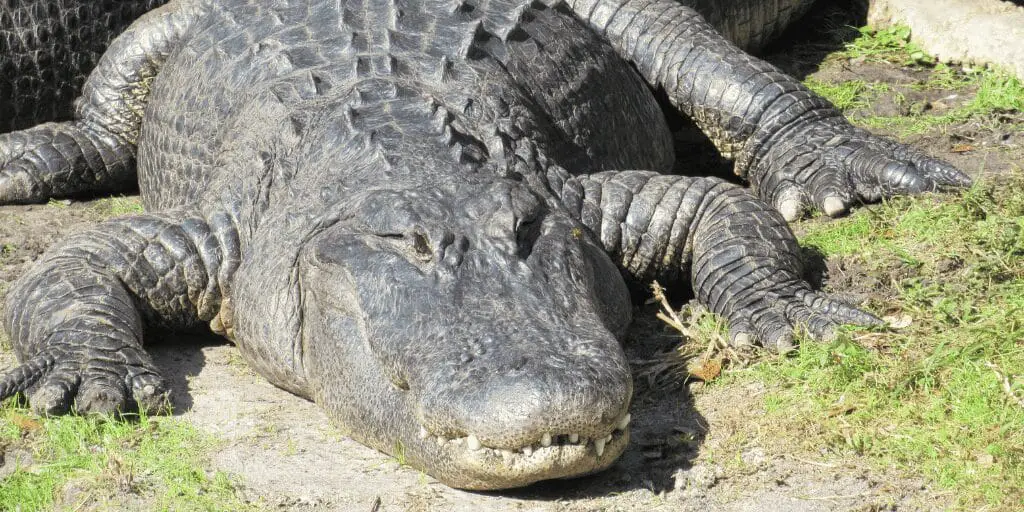
African crocodiles face a variety of threats, primarily due to human activities. Some of the major threats include:
- Habitat loss and fragmentation: As human populations expand and development increases, crocodile habitats are destroyed or divided into smaller, isolated patches. This reduces the available space for crocodiles to live, hunt, and breed, making it more difficult for populations to thrive.
- Illegal hunting: Crocodiles are hunted for their skin, meat, and other body parts, which are used in traditional medicines or sold on the black market. Poaching can have a devastating impact on crocodile populations, particularly when it targets breeding individuals.
- Human-crocodile conflict: As crocodile habitats overlap with human settlements, instances of human-crocodile conflict become more frequent. Crocodiles may be killed in retaliation for attacks on humans or livestock, or out of fear and misunderstanding.
- Pollution and water management: Crocodiles are sensitive to changes in water quality and quantity. Pollution from agricultural runoff, industrial waste, and other sources can degrade crocodile habitats, while dam construction and water diversion projects can alter water flow and disrupt breeding sites.
- Climate change: Rising temperatures and changing rainfall patterns associated with climate change can impact crocodile populations by altering habitat suitability, prey availability, and nesting success. Sea level rise may also affect coastal crocodile habitats.
Conservation Strategies
To address these threats and protect African crocodiles, various conservation strategies have been implemented:
- Habitat protection: Establishing protected areas that encompass critical crocodile habitats is essential for their long-term survival. These areas should be large enough to support viable populations and managed to minimize human disturbance.
- Anti-poaching efforts: Strengthening law enforcement and increasing penalties for illegal hunting can help deter poachers and reduce the impact of the illegal wildlife trade on crocodile populations.
- Community involvement: Engaging local communities in crocodile conservation efforts can help foster a sense of stewardship and reduce human-crocodile conflicts. This can involve education programs, sustainable livelihood initiatives, and participatory management approaches.
- Research and monitoring: Ongoing research and monitoring are crucial for understanding crocodile population dynamics, habitat requirements, and the effectiveness of conservation interventions. This information can guide management decisions and help prioritize conservation actions.
- International cooperation: Many African crocodile species have ranges that span multiple countries, making international cooperation essential for their conservation. Collaborating on research, sharing best practices, and coordinating conservation efforts across borders can help ensure the long-term survival of these species.
Success Stories
Despite the challenges, there have been some notable successes in African crocodile conservation:
- In South Africa, the Nile Crocodile population has recovered from historical declines thanks to protection measures and successful breeding programs. The species is now considered a conservation success story in the country.
- In Ghana, a community-based conservation program has helped protect the West African Slender-snouted Crocodile by involving local people in habitat restoration, monitoring, and ecotourism activities. The program has reduced poaching and raised awareness about the importance of this critically endangered species.
- In Gabon, the creation of Moukalaba-Doudou National Park has provided important protection for the African Dwarf Crocodile and its forest habitat. The park is home to one of the largest remaining populations of this species.
As we work towards a future where African crocodiles can thrive alongside human communities, it is essential that we continue to support and expand these conservation efforts. By protecting crocodiles and their habitats, we not only ensure the survival of these fascinating reptiles but also maintain the ecological integrity of Africa’s diverse ecosystems.
Frequently Asked Questions
Are crocodiles in Africa dangerous to humans?
Yes, some species like the Nile Crocodile can be very dangerous to humans due to their size and aggressive behavior when threatened.
What is the biggest threat to crocodile populations in Africa?
Habitat loss and fragmentation due to human activities such as deforestation, agriculture, and urbanization are the biggest threats to African crocodile populations.
Can crocodile populations recover from overhunting?
Yes, with proper protection measures and conservation efforts, crocodile populations can recover, as seen with the Nile Crocodile in South Africa.
Are there any benefits to having crocodiles in African ecosystems?
Crocodiles play a crucial role in maintaining the balance of their ecosystems by controlling prey populations and providing food for other species.
What can I do to help conserve African crocodiles?
Supporting conservation organizations, spreading awareness about the importance of crocodiles, and making eco-friendly choices that reduce your impact on the environment can all contribute to African crocodile conservation.
- Wild Animals in Costa Rica: A Biodiverse Paradise - 2024-05-16
- Animals That Live in the Rainforest: A Diverse Wonder - 2024-05-15
- Animals in the Safari: A Captivating African Adventure - 2024-05-15





